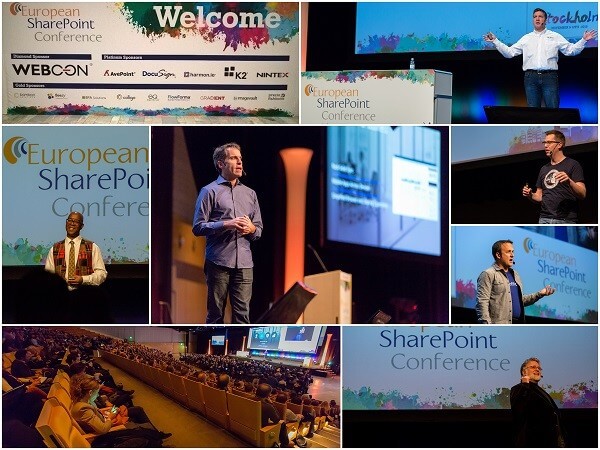Thought leader interview with Danny De Witte on corporate learning, an IT and Learning expert in Belgium
Danny, what is your background?

Danny De Witte on corporate learning with SharePoint
I started at Elsevier Training (part of the Reed Elsevier group), where we did some early work on PC learning. Then I was one of the co-founders of U&I Learning, which was one of the first Belgian e-learning companies, and I worked there for 12 years. About 2 years ago I joined Xylos, I wanted to broaden my work and one of the systems I wanted to work with was SharePoint.
Is your main interest learning or IT or both?
It’s a bit of both. I started as a system engineer a long time ago, but I became interested in learning. Now I specialize in using technology to enhance the learning for end-users of my customers.
How did you first get involved with SharePoint?
My first contact with SharePoint (2003 version)was at U&I Learning. We needed to implement an internal knowledge platform and SharePoint was the tool we used. Now at Xylos, we are a Microsoft partner, and I have the opportunity to work with SharePoint specialists. We use and implement SharePoint a lot and I have been able to get much more involved with it.
How widely used is SharePoint in Belgium?
Not as widely used as in some countries. Most companies are still running SharePoint 2007 but a lot of companies are installing or migrating to SharePoint 2010. Usually the driver is as a document management application or to replace a file server. That’s the first step that customers use it for.
We would like to see our customers also use SharePoint for learning purposes. This is happening slowly. We do have some implementations that use the SharePoint Learning Kit for instance.
Do you find the SharePoint Learning Kit to be effective?
I often refer to it as “My first steps in learning” for a customer. The only thing they want to do at the beginning is to make a course available and have some tracking on it (who has done it and when). Tracking at the course level is not a basic functionality of SharePoint, so we have to have something that does the tracking for the customer. And the SharePoint Learning Kit can do this and give a very basic, quick report for a few courses.
What kinds of customers are using SharePoint for learning in Belgium?
They are companies in various industries. For instance, we have one in the Chemical sector, they already have SharePoint 2007 and they want to make one or two courses available to everyone. Another company, a worldwide company, is also using SharePoint 2007. And they say, we want to train our sales people, we have new products which are being launched very quickly, we want to put the learning for a new product online.
Did you use any kind of assessments?
For one customer, we built a course using Captivate and Presenter, and there was a small assessment at the end of the course.
What do you think of the future potential of SharePoint for use in learning?
I think it’s huge. We have the new version 2010, it has lots of possibilities, meaning that you have the social part in it now. You have additional metadata functionality. You can create a community, you can add an expert search, you can define expertise, and all these things. If you build it correctly, you can have a mixture of formal and informal learning. What we promote to our customers is “If you use already SharePoint, then all the knowledge within your company is already available via SharePoint. Let’s link these documents, these PowerPoint, whatever they are to a community site where you can have your employees discussing these specific topics.”
We often give the example of information about specific topic like Project Management. You have a site that holds documentation about your PM approach, you can add some learning parts, and you can really build your community based on existing content that is already available.
I also see a lot of value in connecting an LMS (learning management system) with SharePoint. We have an agreement with e2train where we use their LMS. We put our content in it, because the customer wants to know who visits the content and how much time they spend there, and then we build web parts that get the content from the LMS and display it in SharePoint. So the company gets the tracking from the LMS, but the employee has a single portal to access learning.
So the LMS runs on top of SharePoint?
No, it’s a separate system. We run them side by side. We’ve built some web parts which identify the user and gets some content from the LMS and displays it in SharePoint.
So users don’t need to login to the LMS, they go to a specific site in SharePoint and if there is a course in the LMS for the topic they are interested in, the course material is displayed in a web part on that site, so it’s all context driven.
Well it depends on the company – what do you really want to know about the learning of the end-user?
If I log in to a course ten times, or if I spend ten hours on a course, that doesn’t mean anything. It just says that I have logged into the course ten times and spent ten hours on it, it doesn’t measure my learning. So if you don’t need that information, you really don’t need a learning management system. You could say, here is the course; take the course, and afterwards do an assessment.
The main reason to have the LMS is for reporting, I call it for “funding purposes”. Here in Belgium, you are able to get some funding from the government if you have a certain number of educational days within the company. Sometimes I talk to a customer and say that if someone visits a course for two hours, it doesn’t say anything about their learning. Did they learn something? We don’t know – the only way to tell is by testing the person – using an assessment.
What do you typically recommend to customers?
Most importantly you have to listen to the customer’s needs!
Do you already have something in place? What do you want to achieve? Do you want to build communities? Do you want to facilitate “informal learning”? Do you want to have formalized learning?
For instance, I was at a customer a few months ago who said they wanted communities of practice for learning. They thought they might need an LMS, but I told them they didn’t need an LMS, SharePoint can do it
So sometimes people think they need an LMS but don’t?
Yes. People often think that if they want to start learning within the company, they need a learning management system. And that’s not always the case. A LMS as the words say will manage your learning, and in a large company where you have lots of courseware going from e-learning to classroom training to documents and other stuff, well then, to cover the management, workflow and the reporting needs, a LMS is very handy. If you don’t need all this, then you could choose something else like SharePoint.
What would be your advice to someone looking at doing informal learning using SharePoint?
First of all, they have to use the latest version, SharePoint 2010. SharePoint 2007 is fine, but there are lots of improvements in the latest version. I would suggest they start with a knowledge site on a specific topic, where they can bundle all the information that’s available and activate the services they require.
You don’t need custom software to get started. Under normal circumstances, we use out of the box SharePoint. We strongly recommend to start using the MySite functionalities. Encourage people to fill in their profile completely with their expertise, things they are interested about, how to contact them etc. The implementation of SharePoint, the MySites functionality and Lync could be, when correctly implemented, a very powerful learning tool.
What about Office 365?
We’re looking at this. We think it would be very powerful for customers to start with Office 365, using SharePoint for learning in the cloud, say with 20-30 users. Then if they like it, they can move the whole company to the cloud or install SharePoint On Premise. However we need to be sure that everything what we put in the cloud can easily be transferred to On Premise if needed. For the moment, this is a concern.
How do you see the future?
I think lots of companies will start to use SharePoint or other community-content system for learning.
For SharePoint to be really useful, it would be nice if we could have some additional tracking within SharePoint where we can see who clicked on what, what was the contribution of users on topics/forums so you can rate or award people based on the contributions they do.
I think we are not there yet, we still have a long way to go. But things are moving in the right direction.
Thank you Danny. How can people contact you?
I’m on Twitter at @paravolve. And I work at Xylos – www.xylos.com. We have expertise in SharePoint and learning. If someone wants a SharePoint and learning solution, we can help them make it happen.











